Content Marketing for Education: Key Benefits and Best Practices

Every day, countless individuals search the internet for information, seeking quick and straightforward answers to their questions. Since the world is becoming increasingly dependent on digital platforms, using the internet as a primary source of learning is not just practical but crucial.
Despite the digital shift, many universities lag in their marketing strategies. According to insights from Marketing Land, numerous educational institutions still focus on traditional methods, such as distributing brochures, flyers, and white papers about the institutions’ greatness. While it’s good to work with proven strategies like direct mail marketing, it’s crucial to recognize that the landscape where students invest their time and attention has evolved.
With over 30% of millennials actively using Snapchat and more than 27% of the entire US population engaged on Instagram, it’s evident that students have shifted digital spaces. Although platforms like Facebook and Twitter remain popular, effective marketing goes beyond mere online presence. It includes getting into the heads of the target audience and conveying messages that resonate emotionally — an area where many educational institutions fall short.
Successful marketing for schools involves showcasing what sets a school apart and compellingly narrating its story to potential students. This is where integrating educational content into existing digital marketing strategies proves invaluable.
What is Educational Content?
Simply put, educational content should prioritize educating its audience before trying to sell a product or service. Recognizing that consumers, especially at the initial stages of the marketing funnel, are more interested in obtaining information than focusing on a specific brand is crucial.
Even for those further along in the decision-making process, leveraging educational content remains beneficial in establishing a brand as a trusted authority. Companies should focus on generating digital content that addresses consumer needs rather than solely promoting themselves. Through informative blog posts and marketing copy, any brand can effectively target consumers throughout their entire customer journey.
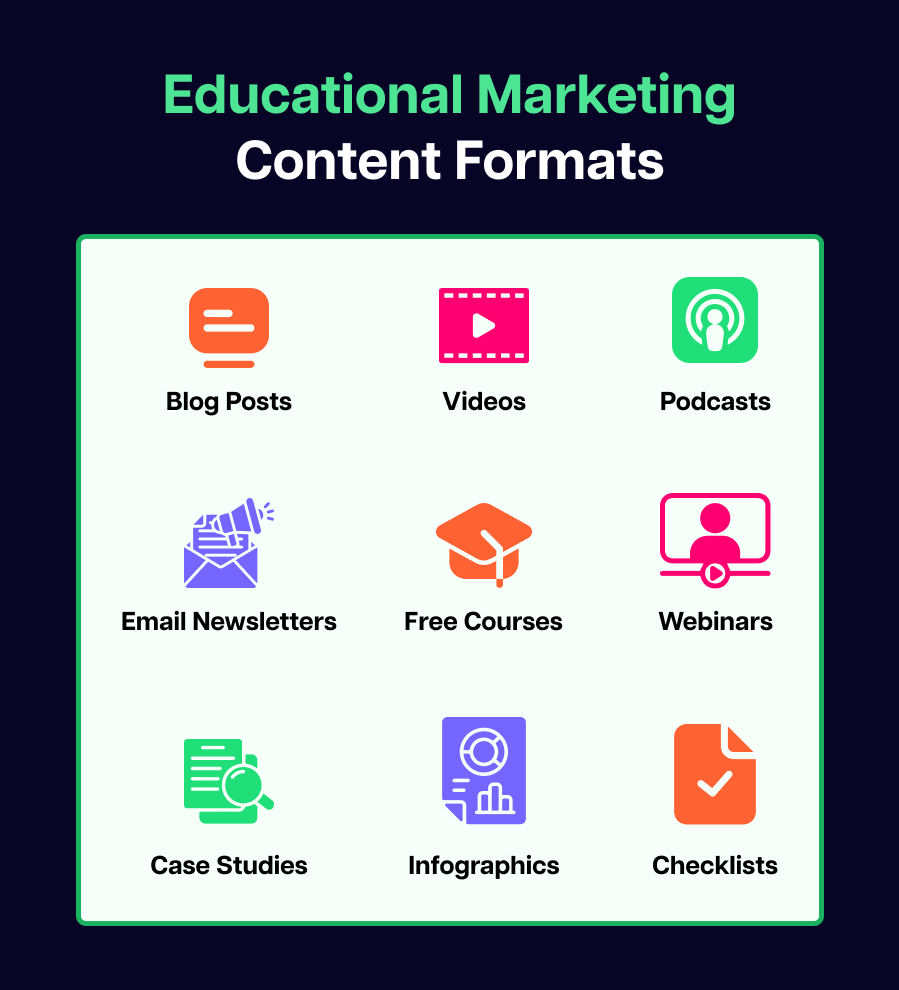
Research indicates that consumers exposed to educational content are 131% more likely to purchase than those who haven’t engaged with such material. When choosing between brands, people are 83.6% more likely to opt for the one offering educational content. The results are clear: educational content not only attracts new audiences but also nurtures leads and persuades them to become customers.
The main goal of educational content marketing is to enrich the audience’s experience by providing valuable information on various topics. Its purpose extends beyond promotion, aiming to deliver valuable insights while establishing credibility with the target demographic.
Understanding the Education Audience
The education sector caters to a broad spectrum of individuals, each with their own unique needs, preferences, and roles within the educational ecosystem. To navigate this complex landscape successfully, it is crucial to study the specifics of the primary audience, including students, parents, educators, and institutions.
-
Students: As the central figures in the education system, students are the primary beneficiaries of educational content. Understanding their interests, learning styles, and challenges is important in crafting content that resonates and engages. For example, visual and interactive content may resonate well with students, catering to their tech-savvy and dynamic learning preferences.
-
Parents: Parents play a key role in a student’s educational journey. Educational content should address their concerns, provide insights into the learning process, and offer guidance on supporting their children’s academic endeavors.
-
Educators: Teachers and educational professionals are essential stakeholders. Tailoring content to address their professional development needs, classroom challenges, and innovative teaching methodologies fosters a supportive relationship between educational content creators and those implementing it in classrooms.
-
Institutions: Educational institutions themselves form a critical audience. Content directed towards them should focus on their unique strengths, educational philosophies, and the value they bring to students and the community.
This shows that crafting educational content that speaks directly to these audiences enhances engagement and plays a pivotal role in shaping decisions and fostering a positive and supportive educational environment.
Key Benefits of Content Marketing in Education
Implementing educational content marketing strategies can be highly beneficial. Here are key benefits of content marketing for education worth highlighting:
1. Enhancing Brand Awareness and Trust
Content marketing allows educational institutions to showcase their unique strengths, values, and success stories. By consistently delivering valuable and relevant content, institutions can build a positive image and distinguish themselves in a crowded educational landscape.
For example, The University of Toronto has a dedicated podcast page on its school website, covering a range of topics to better appeal to its students.
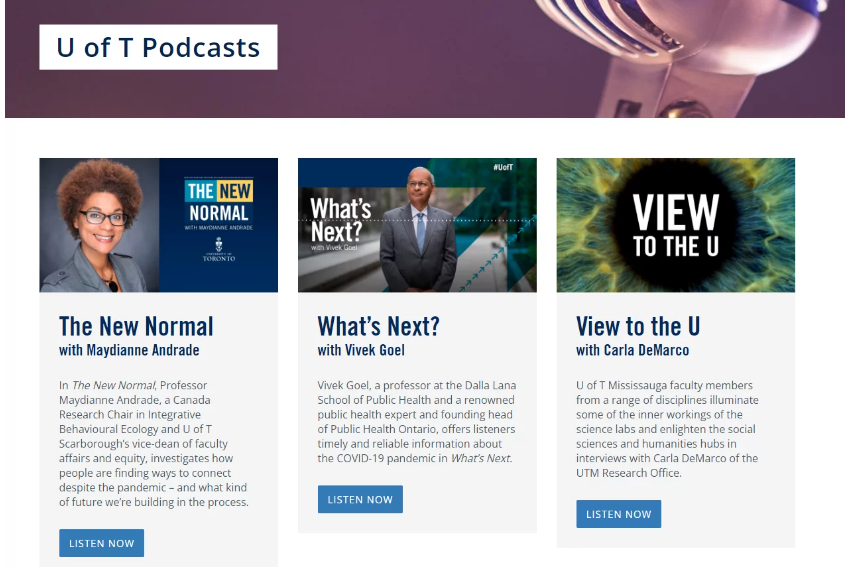
Sharing authentic stories and information helps establish trust among prospective students, parents, and the community, contributing to the overall credibility of the institution.
2. Student Recruitment and Retention
Compelling content, such as engaging blog posts, videos, and social media updates, can attract the attention of prospective students. By highlighting the institution’s strengths and academic achievements, content marketing becomes a persuasive tool in influencing enrollment decisions.
For example, Northwestern University has created a branded blog for its students and prospects that focuses on brand awareness, graduate programs, and other useful insights for the University.
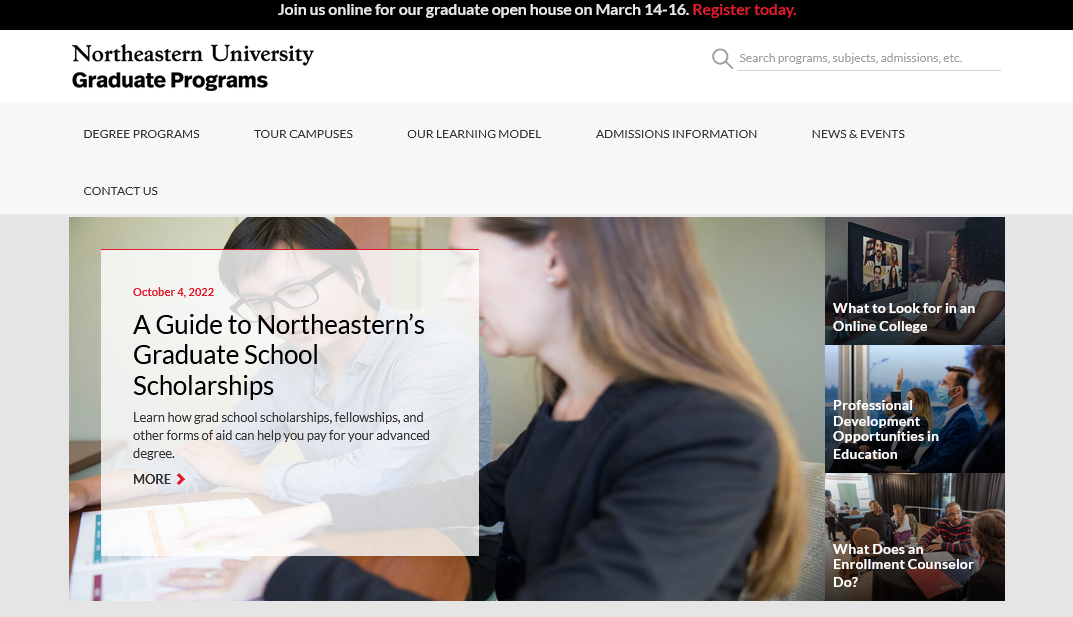
This brilliant example shows that ongoing content engagement contributes to student retention. Educational content that fosters a positive and supportive environment, showcases campus life, and communicates the value of education can enhance the overall student experience, encouraging current students to stay.
3. Community Engagement
Content marketing facilitates the creation of a shared identity and sense of belonging among students, staff, and alumni. Through stories, events, and collaborative projects, institutions can nurture a community that extends beyond the physical campus.
A great example is Manchester Metropolitan University, which has created a community for its students, learners, and prospects to interact, engage, communicate, get custom guidance, and stay informed about all the happenings.
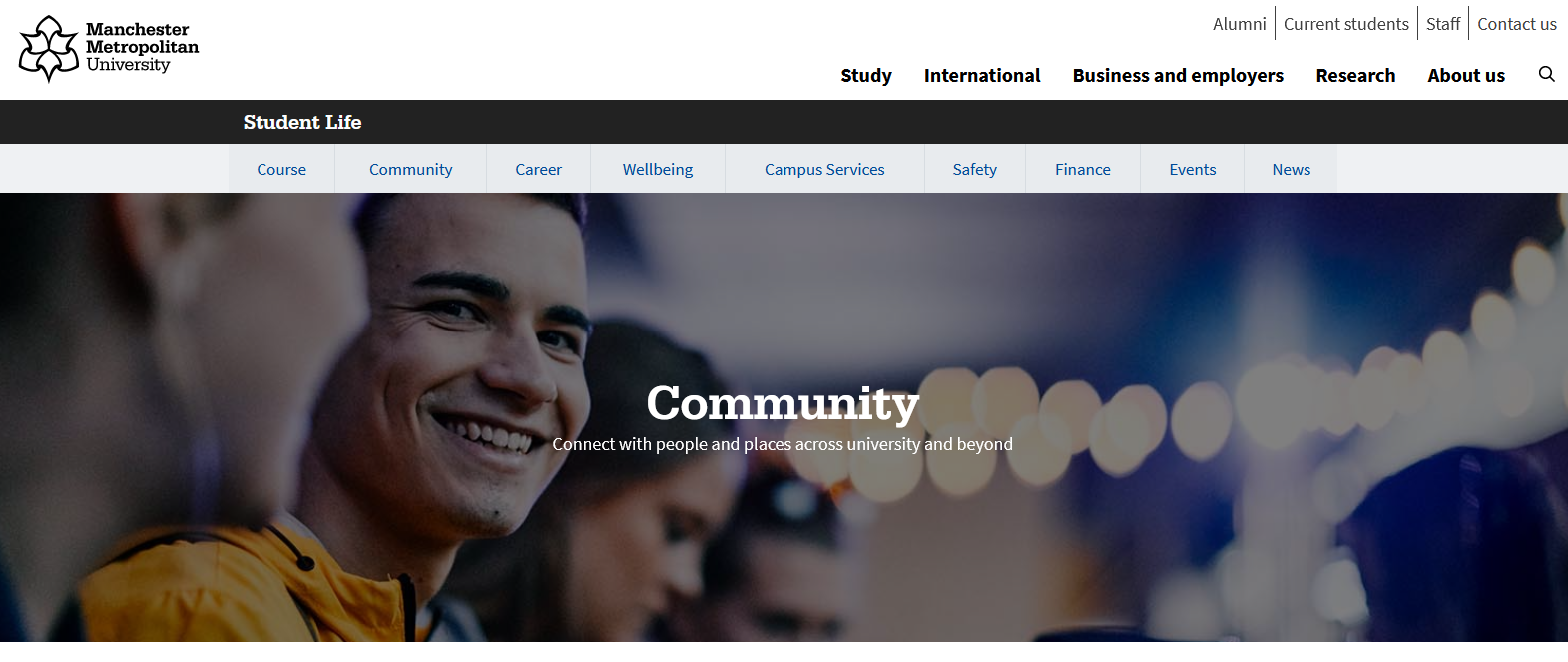
By keeping the community informed and engaged through content, institutions strengthen the bonds between stakeholders. Whether through alumni success stories or coverage of campus events, content-driven engagement helps build a supportive network around the institution.
Content Types That Resonate in the Educational Sphere
1. Educational Blogs and Articles
Educational blogs and articles serve as foundational content in the educational sphere. These written pieces provide in-depth insights into academic subjects, learning methodologies, and industry trends. By tailoring content to inform and engage,
institutions can establish themselves as authorities in their respective fields.
One great example of a successful school blog is the “Edutopia Blog” by the George Lucas Educational Foundation. Edutopia is dedicated to sharing innovative and effective teaching strategies, resources, and insights.
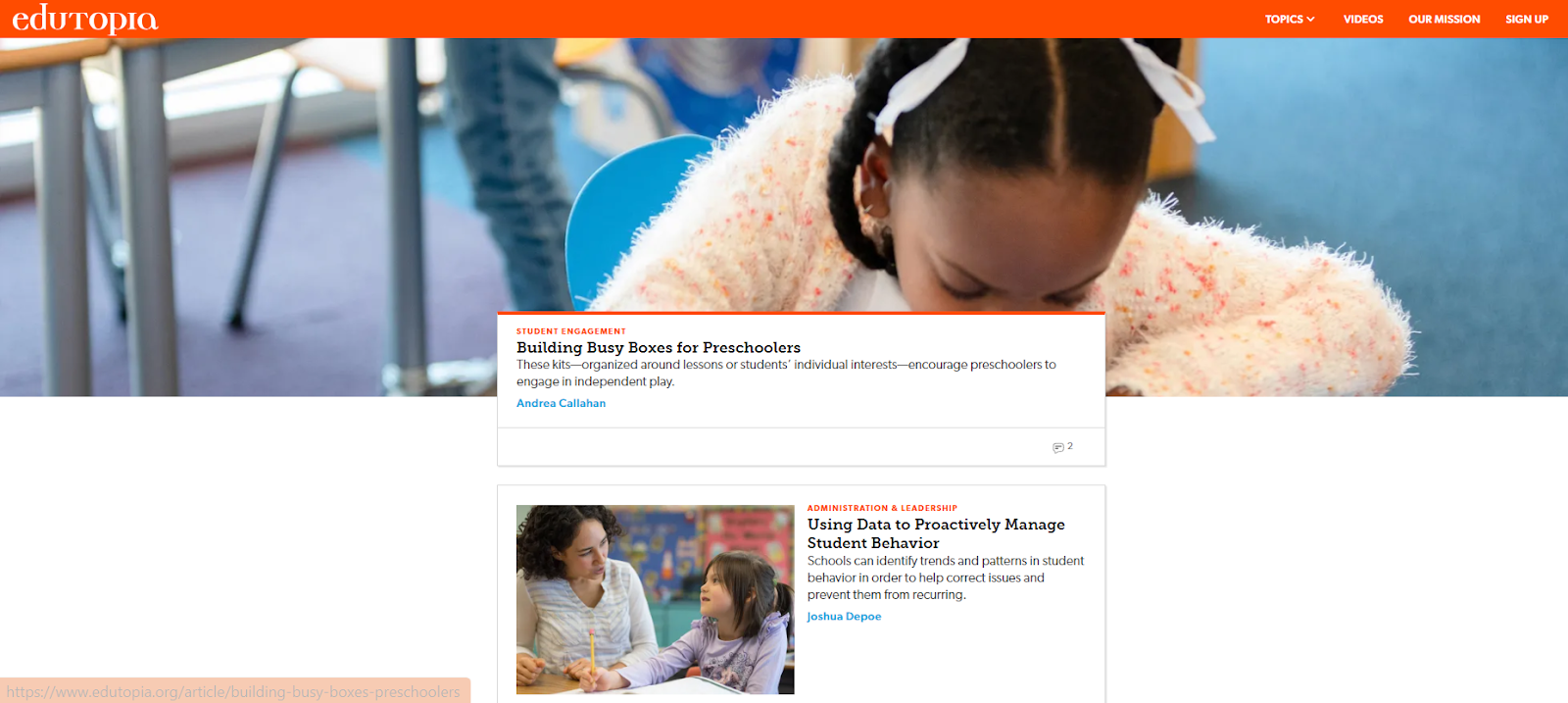
Educational blogs not only cater to the informational needs of students and educators but also contribute to building a knowledge-sharing community.
2. Interactive Content
Interactive content, such as quizzes, surveys, and infographics, adds a dynamic layer to educational content. Quizzes and surveys engage students in a participatory learning experience, making the educational process more enjoyable and memorable.
Interactive infographics provide a visually appealing way to convey complex information. This form of content educates and encourages active participation, fostering a sense of involvement among the audience.
3. Video Content
The impact of video content in the educational sphere cannot be overstated. Educational videos, webinars, and virtual tours offer immersive experiences that cater to diverse learning styles. Educational videos provide visual and auditory learning stimuli, making complex concepts more accessible.
For example, Seattle University shared a video on Homecoming that most people can resonate with and connect emotionally with the visuals and narrative.
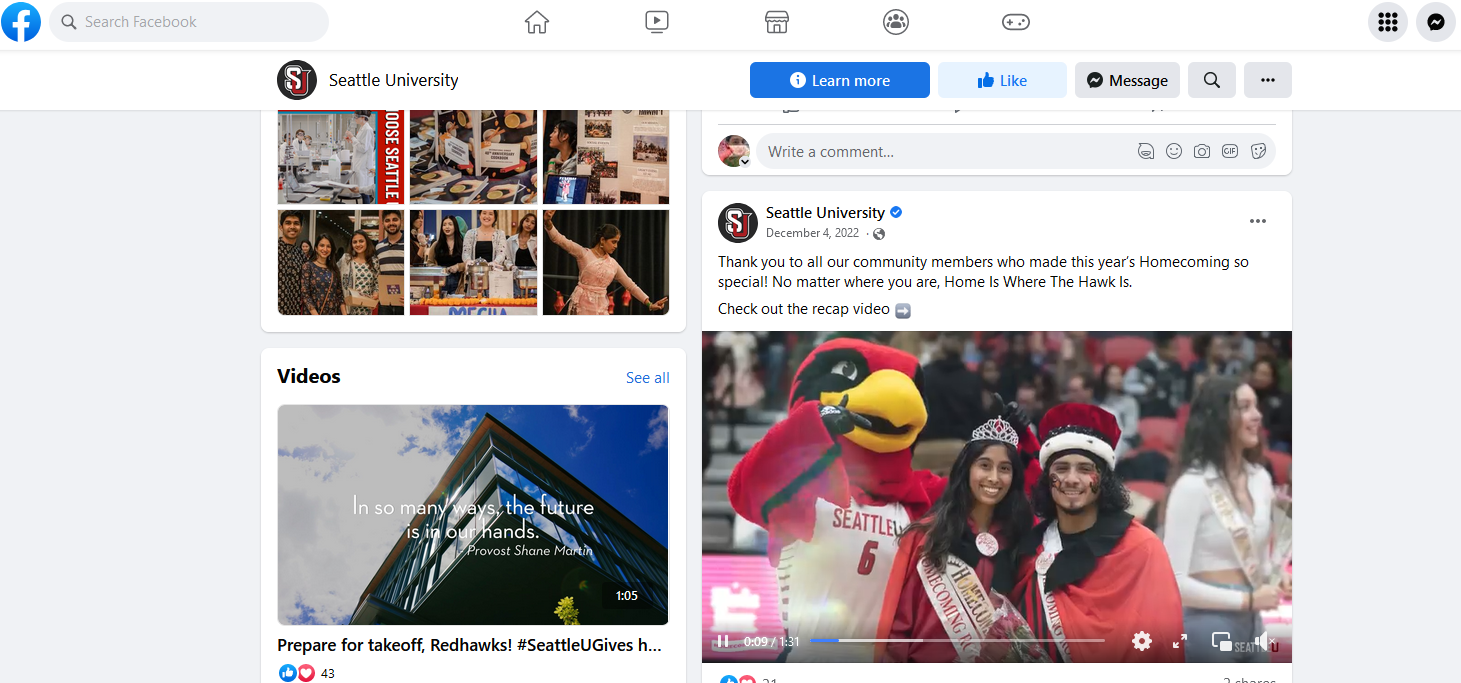
Webinars, on the other hand, bring experts and educators together, creating a platform for in-depth discussions. Virtual tours offer prospective students a firsthand look at campus facilities and life. The versatility of video content enhances engagement and facilitates effective communication in the educational space.
4. Testimonials and Success Stories
Leveraging the experiences of alumni and students through testimonials and success stories is a compelling way to build trust and inspire confidence. And this is exactly what the IOWA University Distance and Online Education portal did! It showcased student success case studies highlighting their educational journey toward achieving their career goals at IOWA.
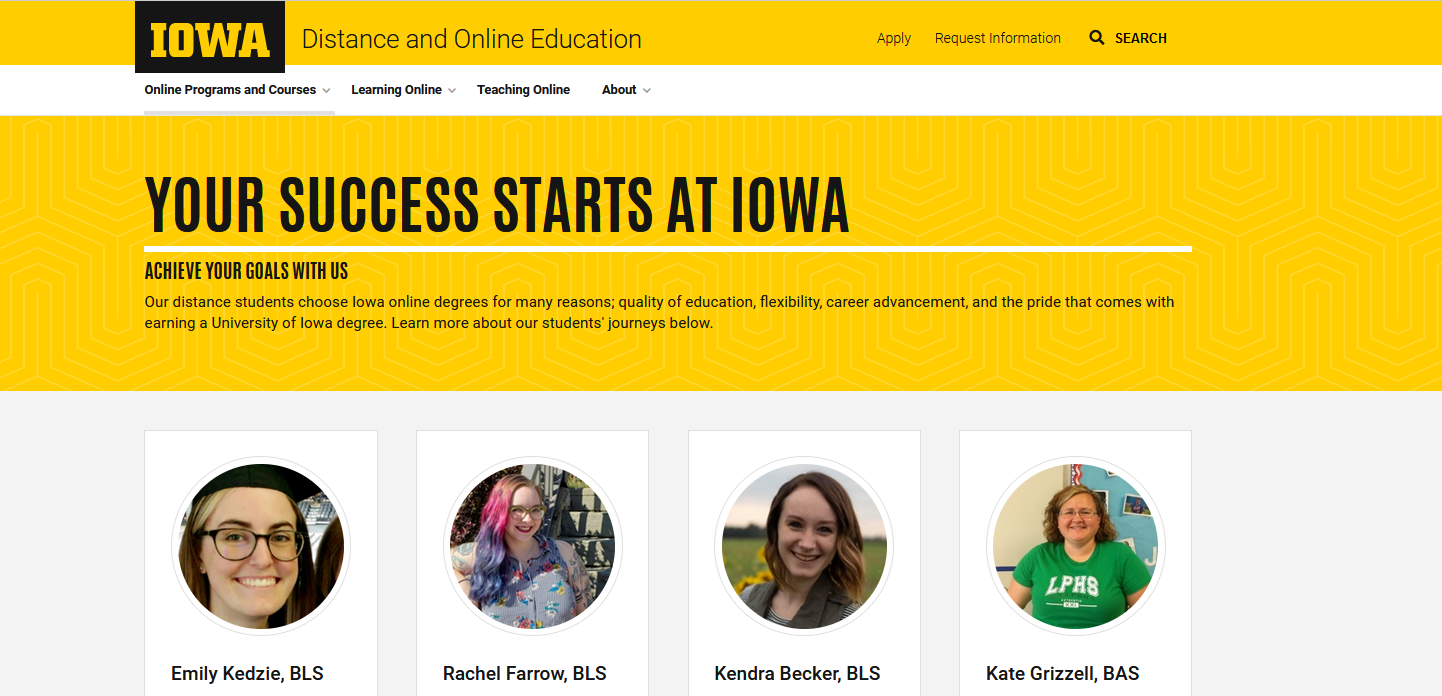
Real-life narratives provide a human touch to the educational journey, helping prospective students envision their own paths. Testimonials from successful alumni not only showcase the institution’s impact on individual lives but also contribute to the overall reputation and credibility of the educational institution.
Best Practices in Content Marketing for Education
Content marketing has become indispensable for educational institutions seeking to engage, inform, and attract their target audience. To ensure the effectiveness of content strategies, certain best practices tailored to the unique needs of the education sector are crucial:
1. Authenticity and Relevance
Authenticity is very important in content marketing. Educational institutions should create content that reflects their core values, mission, and identity. Authentic content builds trust and resonates more deeply with the audience.
Moreover, it should be tailored to the needs and interests of the audience. Understanding the concerns of students, parents, educators, and other stakeholders ensures that the content remains relevant and valuable.
2. SEO Optimization
Utilize thorough keyword research to understand what prospective students and other stakeholders are searching for. Incorporate relevant keywords naturally into your content to enhance its discoverability through search engines.
Pay attention to metadata, including titles, descriptions, and alt text for images, to improve search engine ranking. Well-optimized metadata increases the visibility of educational content.
3. Multi-Channel Strategy
Implement a multi-channel strategy by integrating content across various platforms. Utilize social media, the institution’s website, and email campaigns to reach a broad audience. Each platform serves a unique purpose, providing a comprehensive approach to content distribution.
In fact, a study by the Pew Research Center indicated that 71% of Americans ages 13 to 17 use Facebook, 52% use Instagram, 41% use Snapchat, 33% use Twitter, and 71% regularly use more than one of these social networks.
While adapting content to different platforms, maintain a consistent brand voice and messaging. This ensures a unified and recognizable presence across channels.
4. Consistency and Quality
As we all know, consistency is key in content marketing. Hence, it is necessary to establish a regular posting schedule to maintain audience engagement. Whether it’s educational blogs, videos, or social media updates, a steady flow of content keeps the audience informed and interested.
Prioritize quality over quantity. Educational content should be well-researched, accurate, and valuable. High-quality content not only enhances credibility but also encourages sharing and engagement.
5. Measuring Success
Utilize analytics tools such as Google Analytics, SEMRush, and HubSpot to measure the success of content marketing efforts. Track metrics such as website traffic, engagement rates, and social media interactions. Analyzing these metrics provides insights into what content resonates most with the audience.
Clearly define objectives and key performance indicators (KPIs) for your content marketing efforts. Whether it’s increasing enrollment, boosting engagement, or improving brand awareness, having measurable goals allows for effective evaluation.
Case In Point: How Coursera and Skillshare are Winning the Content Game
Coursera is a digital education platform open to all, offering diverse courses encompassing subjects like coding, marketing, and accounting.
Beyond the virtual classroom, Coursera employs a more personal touch through its Tumblr blog, providing a human voice to the brand. One compelling post recounts the inspiring journey of a student who, feeling “trapped” in her career, leveraged Coursera to build the confidence needed to pursue her true aspirations. This narrative-driven approach on their blog adds a personal touch to the brand, showcasing real-life stories of empowerment and transformation facilitated by the platform’s educational offerings.
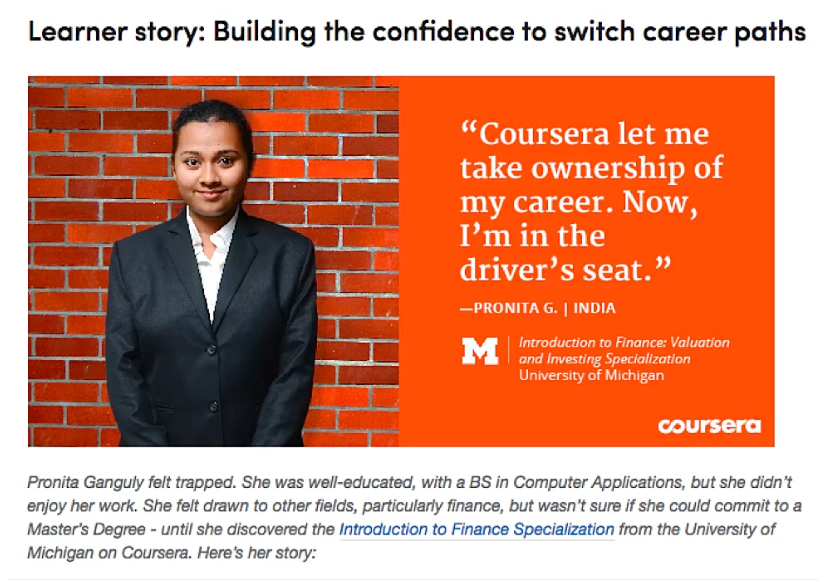
Another excellent example of content marketing for education is LinkedIn Learning, which has capitalized on the professional networking platform’s vast user base. By seamlessly integrating educational content with a professional networking environment, LinkedIn Learning has successfully positioned itself as a go-to resource for career development.
On the other hand, Skillshare has excelled in content marketing by focusing on a community-driven approach. By fostering a sense of belonging and collaboration among its user base, Skillshare has created a platform where learners become contributors.
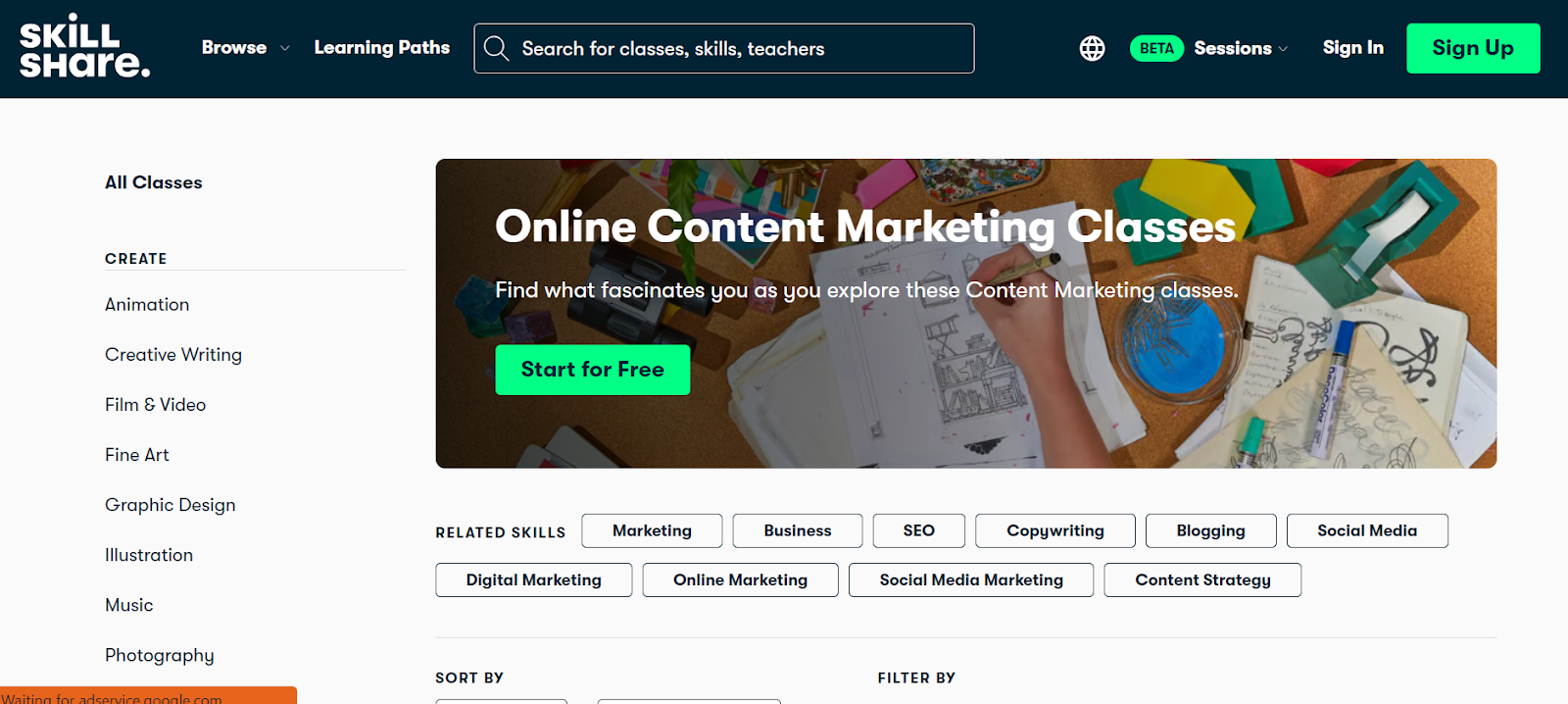
The success of Skillshare, LinkedIn Learning, and Coursera in content marketing for education underscores the importance of user-centricity, diverse content offerings, strategic partnerships, engagement, and data-driven decision-making.
By studying these examples, educational institutions can draw valuable insights to enhance their own content marketing strategies and better serve their audiences.
What’s Next?
Educational content marketing is rapidly evolving, with several noteworthy trends shaping its trajectory. AI-driven content and virtual reality (VR) are among the latest innovations driving engagement and transforming the educational experience. AI algorithms are being employed to personalize content delivery, catering to individual learning styles, while VR offers immersive and interactive educational environments.
Looking ahead, content marketing for education will become even more dynamic. The integration of AI will become more sophisticated, offering personalized learning paths and real-time feedback. VR is anticipated to expand, providing more realistic simulations for hands-on learning experiences. Additionally, interactive and multimedia content will continue to gain prominence, enhancing learner engagement.
In this evolving landscape, Pepper Content can be the ideal partner to meet the diverse content needs of educational institutions. From AI-driven content strategies to immersive experiences, Pepper Content can ensure that your educational content stays ahead of the curve. Book a demo to learn more about their writing services or how they can help you elevate your educational content marketing strategy!
Latest Blogs
Learn how to rank on AI search engines like ChatGPT, Perplexity, and Gemini by optimizing your content for authority, structure, and relevance. Stay ahead in AI-driven search with this strategic guide.
Explore the best healthcare SEO services for your medical practice. Improve online visibility and effectively reach more patients in need of your services.
Discover top social media agencies specializing in banking solutions, enhancing financial services and driving engagement.
Get your hands on the latest news!
Similar Posts

Content Strategy
5 mins read
Choosing The Best Healthcare Marketing Agency For Effective Content Solutions
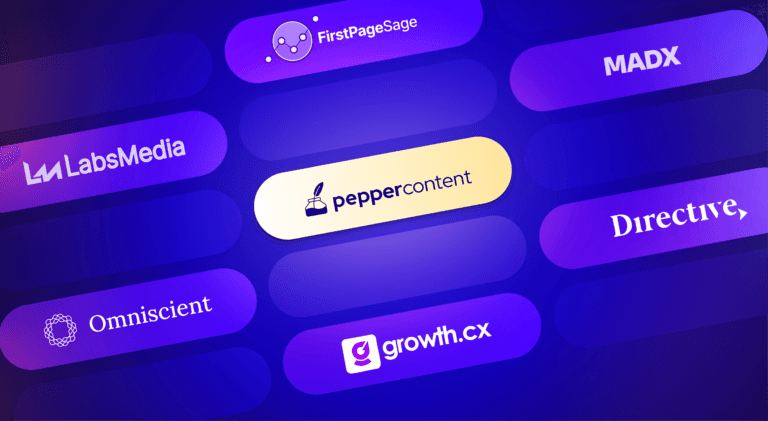
Content Marketing
4 mins read
Top 10 Agencies B2B SaaS Content Marketing for B2B Success

B2C Marketing
5 mins read